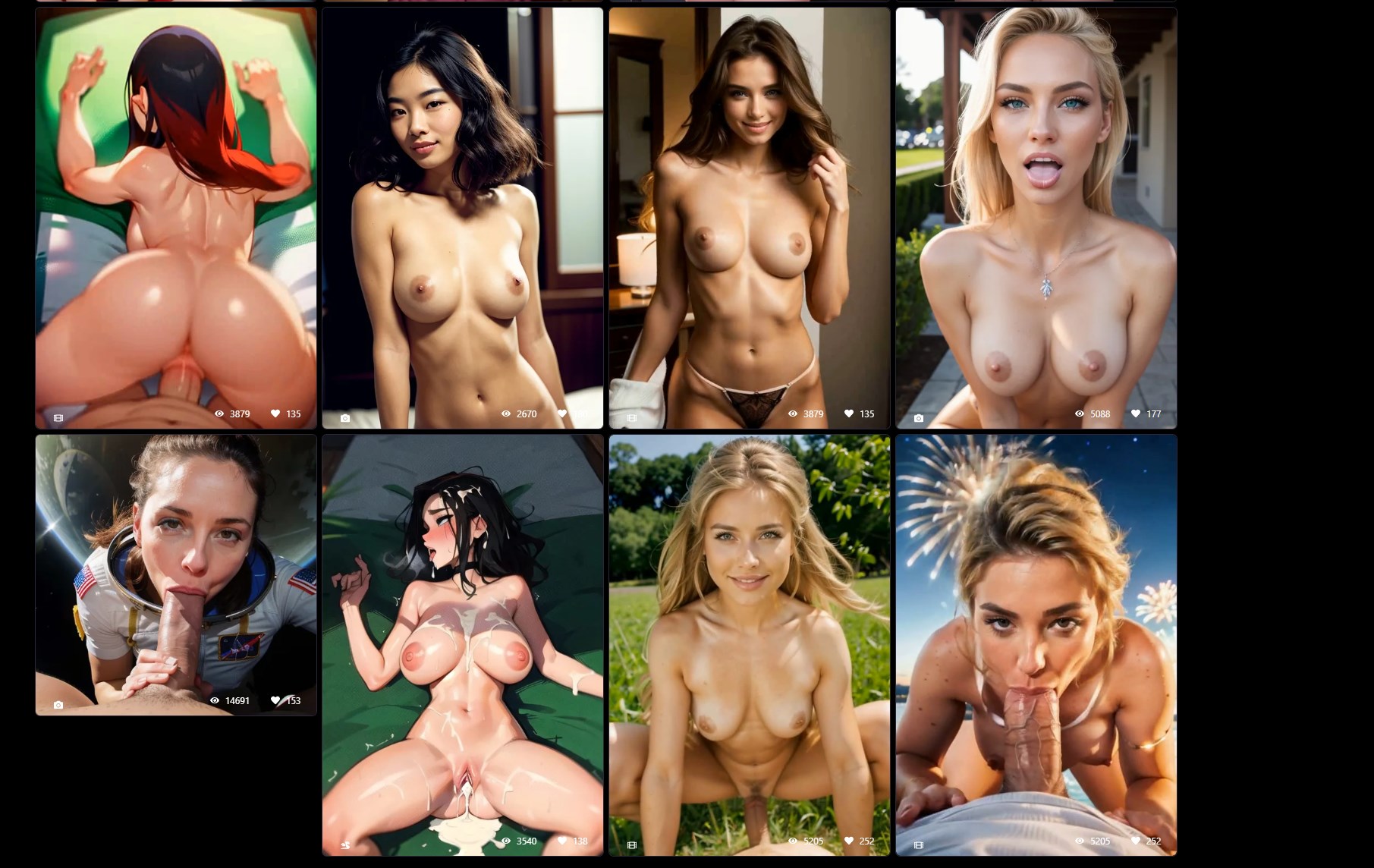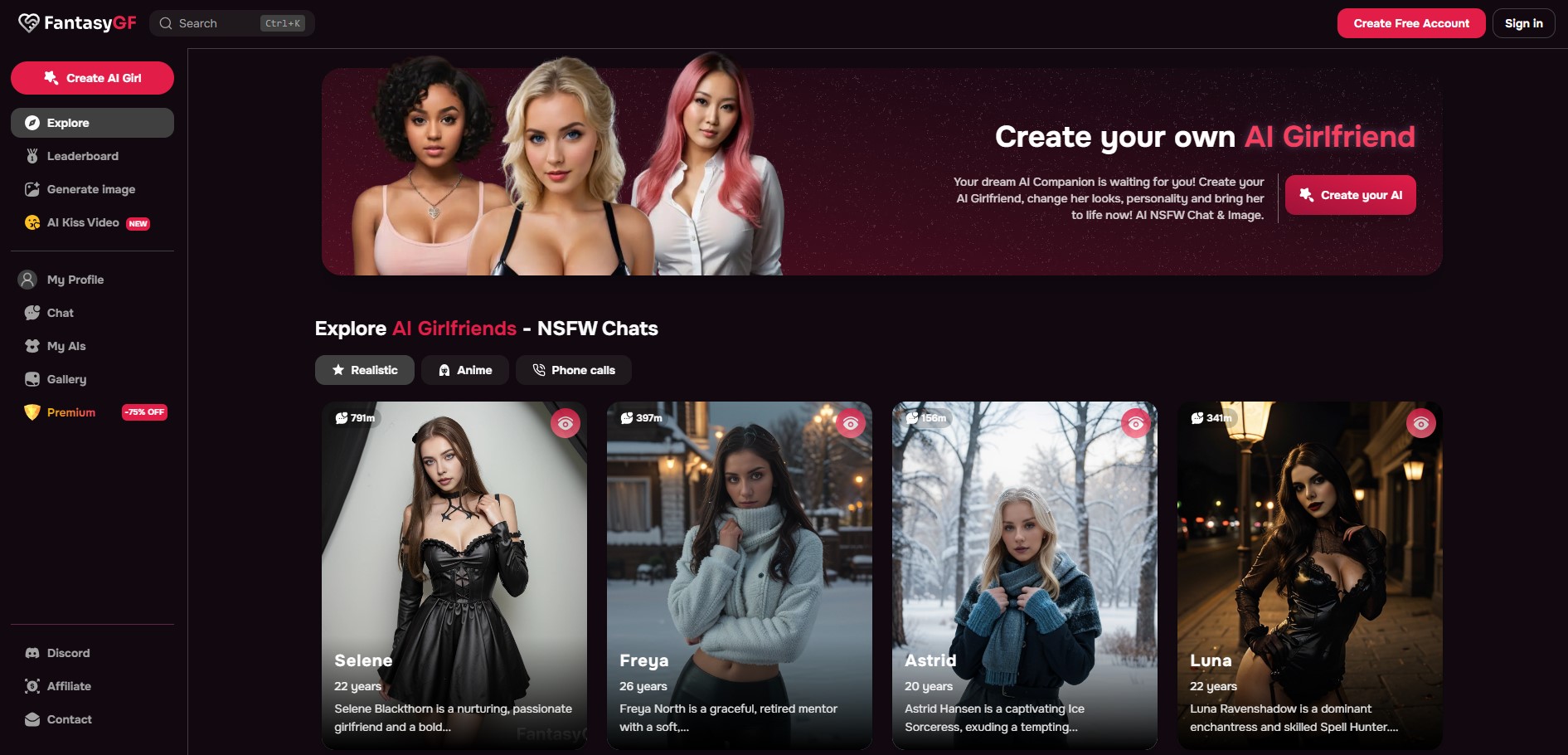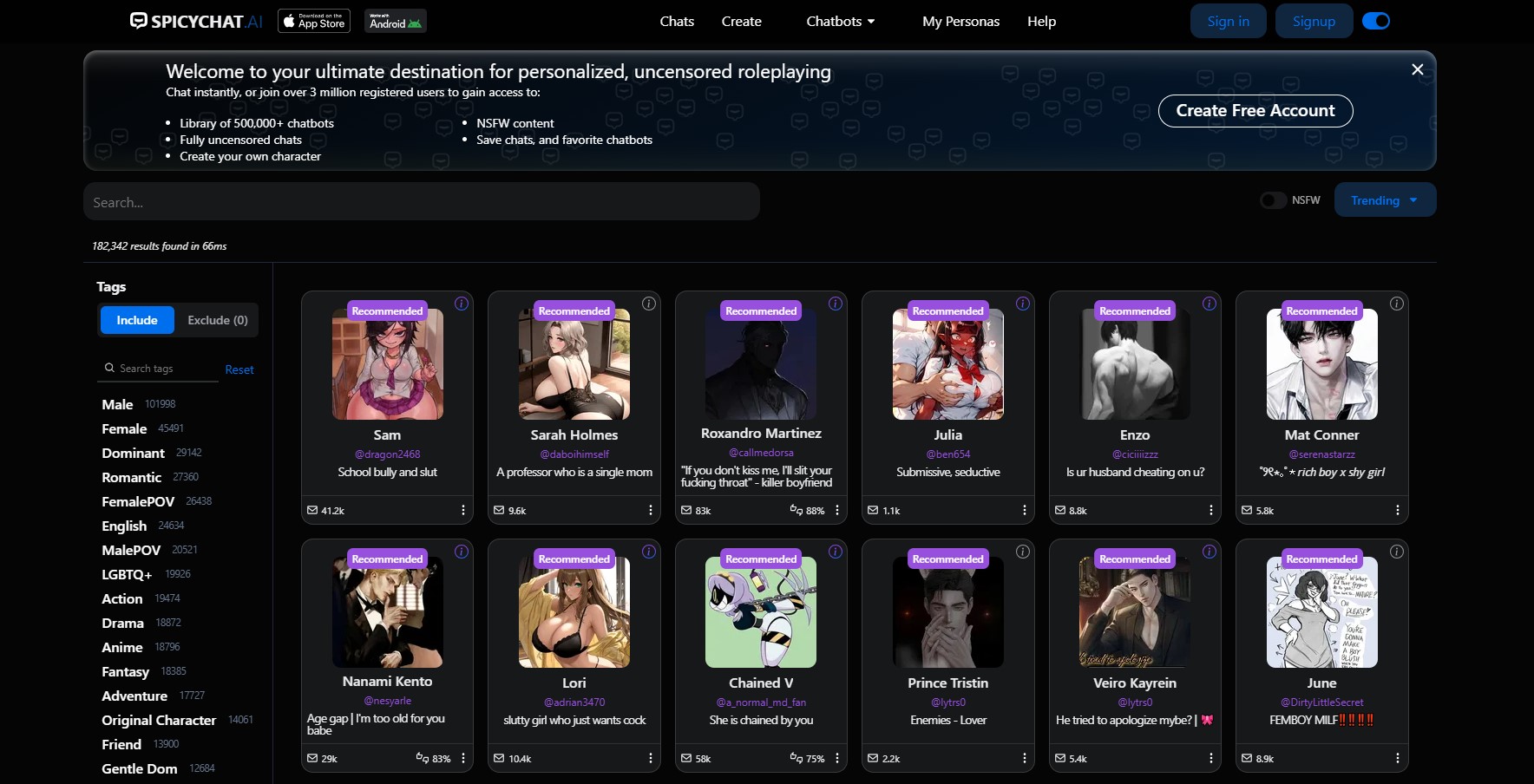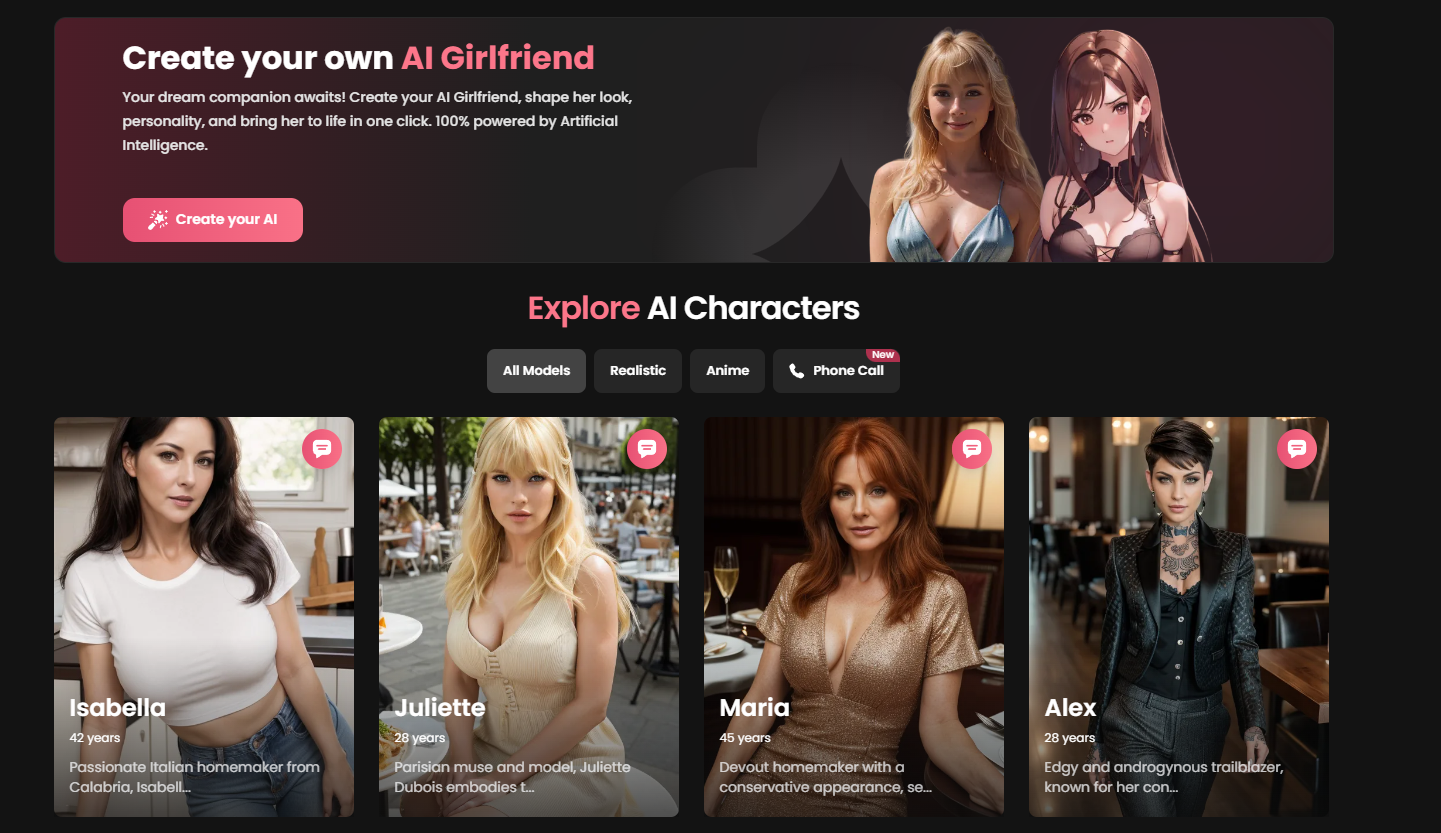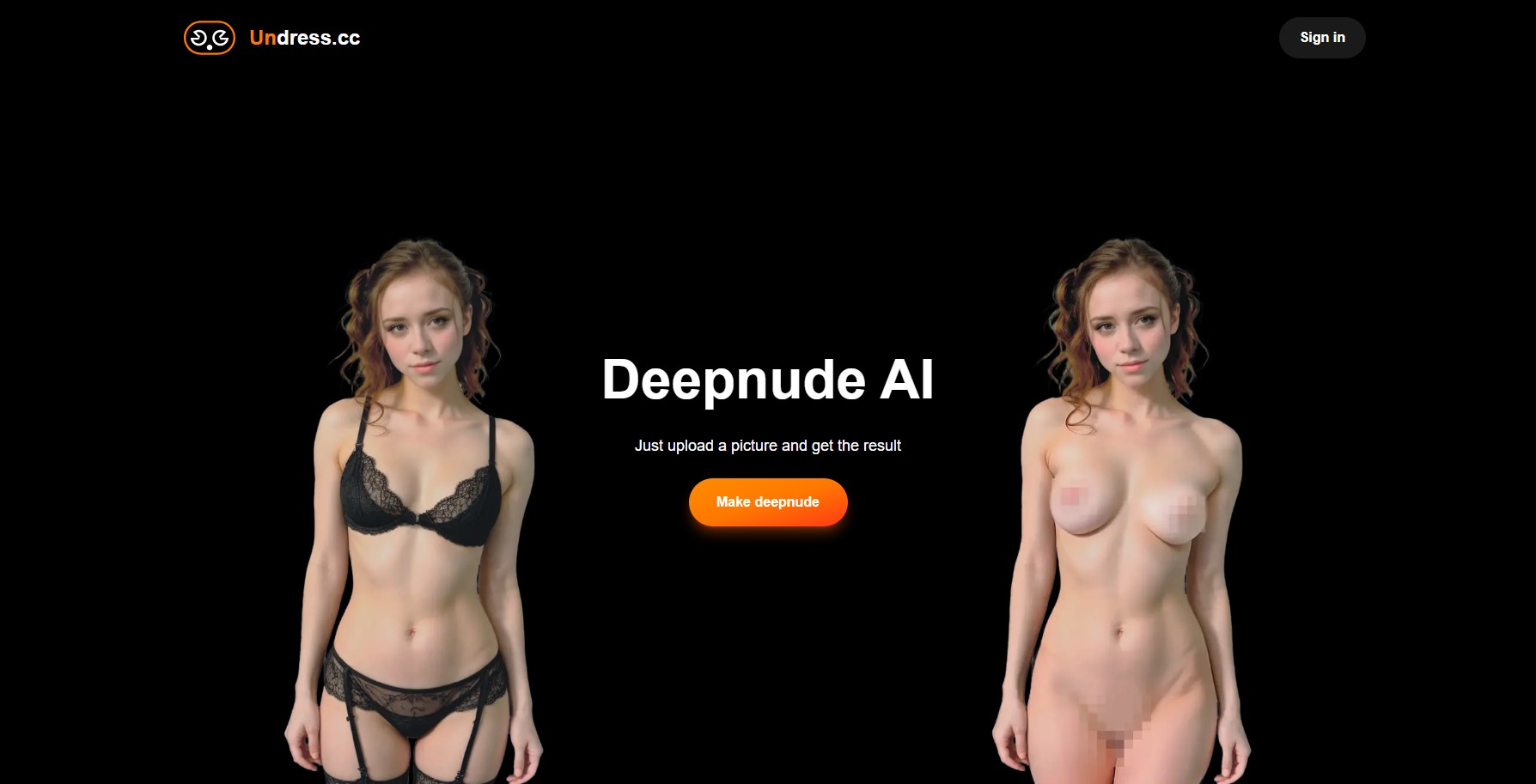AI Cameltoe
Unveiling AI Cameltoe: The Ultimate Guide to Free AI Creations! 😘
Dive into a world where your wildest fantasies come alive with AI Cameltoe, the groundbreaking adult service taking personalization to decadent new heights. Imagine crafted perfection, where every curve and whisper caters to your desires, with an AI companion that’s more than imagination-it’s intimate reality. Whether you’re designing your ideal avatar or engaging in scintillating conversations, AI Cameltoe serves a playground for the art of seduction, blending technology with passion’s fire. Ready to explore the sultry side of AI? Unleash your fantasies and step into a digital dalliance like no other.

Candy.ai
✔️ Generate AI Porn Images
✔️ Listen To Voice Messages
✔️ Fast Response Time

Seduced.ai
✔️ Generate AI Models
✔️ Save & Reuse Girls
✔️ 300 Images Per Month

PromptChan.ai
✔️ Completely Free To Test
✔️ Edit Your AI Models
✔️ Make Porn Images (no limit)
🎉 Promptchan 🎉
Explore the World of Promptchan
Step into the vibrant universe of Promptchan, where creativity knows no bounds! Dive into AI Cameltoe, your ultimate playground for conjuring up unique characters and engaging in lively conversations with personalized AI bots. Let your imagination run wild as you craft avatars teeming with personality and flair, then watch your creations come to life. Whether you’re a storytelling enthusiast or simply curious to explore new digital friendships, Promptchan opens the door to limitless possibilities and endless fun. Unleash your creativity and begin your journey into this captivating world today!

PromptChan.ai
✔️ Completely Free To Test
✔️ Edit Your AI Models
✔️ Make Porn Images (no limit)
- User-friendly interface simplifies content creation.
- Diverse prompt options allow for creative exploration.
- Saves time with pre-generated content suggestions.
- Easily integrates with various content platforms.
- Powers innovative and engaging storytelling techniques.
- The free version has very limited features.
🔥 FantasyGF 🍆
Discover FantasyGF's Magic World
Step into a world where your imagination takes the lead and fantasy meets cutting-edge technology. With FantasyGF, you can bring your dream characters to life, crafting personalities and stories that are as unique as your own imagination. Immerse yourself in captivating conversations with AI creations that evolve with every interaction, responding to your whims and desires. Whether you’re building fantastical companions, flirty confidants, or adventurous allies, FantasyGF offers a limitless playground where creativity knows no bounds. Dive into AI Cameltoe and let your fantasies unfold-because the perfect blend of fiction and reality is just a conversation away.
- User-friendly interface makes it easy to navigate and create content efficiently without a steep learning curve.
- Diverse content customization options allow creators to tailor their work to specific audiences, enhancing engagement and creativity.
- Categorized templates and prompts provide inspiration and structure, helping users generate high-quality content quickly.
- A supportive community and collaboration tools foster idea exchange and refinement, elevating the quality of final outputs.
- A versatile platform that accommodates multiple content formats, offering flexibility and scope for innovative projects.
- The free version has limited features and support.
🍑 Seduced.ai 🔥
Unveiling the Magic of Seduced.ai
Unveil a world of limitless creativity and personal interaction with Seduced.ai’s latest feature: AI Cameltoe. Dive into an engaging platform where imagination takes center stage, and your fantasies are brought to life. With the power of cutting-edge AI technology, create your own unique characters and embark on captivating conversations with your personalized AI bot. Whether you’re crafting a new reality or exploring fantastical realms, Seduced.ai invites you to redefine digital storytelling and relationship building. Get ready to be seduced by the possibilities and let your creativity run wild.

Seduced.ai
✔️ Generate AI Models
✔️ Save & Reuse Girls
✔️ 300 Images Per Month
- User-friendly interface simplifies the content creation process, making it accessible even for those with limited technical skills.
- Diverse range of customizable templates allows for quick and creative ways to produce visually appealing content.
- A powerful AI-driven engine ensures high-quality and engaging content generation with minimal effort.
- The platform offers real-time editing and collaboration features, enhancing teamwork and productivity for content creators.
- Seduced.ai provides robust analytics tools to track content performance, enabling users to refine and optimize their strategies effectively.
- The free version has limited features and options.
😻 Spicychat.ai 🍆
Discover the Magic of Spicychat.ai
Welcome to Spicychat.ai, where your imagination meets cutting-edge AI technology to bring your wildest characters to life! Dive into a world where you can design an AI companion that truly resonates with you-from their personality to their quirks, and everything in-between. Whether you’re seeking meaningful conversations, whimsical interactions, or even that delightful hint of sass, Spicychat.ai lets you craft an experience perfectly tailored to your desires. Unleash your creativity, generate unique characters, and embark on unforgettable adventures in conversation. Discover the magic of AI companionship like never before!

SpicyChat.ai
✔️ Fully uncensored sex chats
✔️ Library of 500,000+ chatbots
✔️ Create NSFW porn content
- Easily adapts to user preferences with its customizable interface, allowing for a personalized content creation experience.
- The intuitive design streamlines the process, enabling users to generate high-quality content efficiently without a steep learning curve.
- A vast library of templates and tools supports diverse genres and styles, catering to varied content needs and creative inspiration.
- The AI’s predictive analytics enhance content originality and engagement by providing insightful suggestions and improvements.
- User-friendly collaboration features ensure seamless teamwork, offering real-time editing and feedback capabilities for collective content creation.
- The free version has limited features for AI Cameltoe.
👙 Candy.ai 🎉
Discover the Sweetness of Candy.ai
Dive into the whimsical world of Candy.ai, where your imagination meets artificial intelligence in the most playful and vibrant way possible! Meet AI Cameltoe, your sassy digital companion ready to transform your world of creative interaction. Whether you’re crafting characters from scratch or engaging in lively chats with your personalized AI bot, Candy.ai offers an unparalleled adventure in customization and conversation. Unleash your creativity and let your ideas run wild-every interaction a sweet new experience, every character truly your own. Discover the delightful and sometimes cheeky possibilities that await; your AI journey starts with Candy.ai!

Candy.ai
✔️ Generate AI Porn Images
✔️ Listen To Voice Messages
✔️ Fast Response Time
- Candy.ai provides an intuitive interface that simplifies content creation, making it accessible for both beginners and experienced users aiming to produce high-quality materials.
- The platform offers advanced AI-driven tools that enhance creativity and allow for the generation of unique content, improving engagement and originality.
- Candy.ai includes customizable templates and design options that help users swiftly tailor content to their specific needs, ensuring versatility and adaptability.
- The user-friendly features of Candy.ai enable efficient workflow management, allowing creators to streamline their processes and increase productivity.
- Candy.ai supports collaborative features, enabling team-oriented content development and ensuring seamless sharing and edits among multiple contributors.
- Candy.ai free version has limited features available.
👙 Undress.cc 👙
Discover the Magic of Undress.cc
Step into the realm of creativity and innovation with Undress.cc’s latest feature, AI Cameltoe. This groundbreaking app invites you to unleash your imagination, offering a unique platform where you can generate your own vibrant characters or engage in dynamic conversations with your personalized AI bot. Whether you’re sculptor of stories or a pioneer of possibilities, Undress.cc empowers you to bring your visions to life in a captivating blend of art and intelligence. Dive in, explore endless scenarios, and let your virtual persona speak volumes.

Undress.cc
✔️ Generate images of girls without clothes
✔️ Use x-ray mode or lingerie mode
✔️ Accessible & user-friendly
- User-Friendly Interface: Undress.cc provides an intuitive and easy-to-navigate platform that allows users to create content efficiently, even with minimal technical expertise.
- Diverse Creative Tools: The platform offers a wide range of design and editing tools, enabling users to produce visually appealing and unique content effectively.
- Cuts Production Time: By streamlining the content creation process, Undress.cc helps users save significant time compared to traditional methods, allowing for quicker project completion.
- Catering to Trends: With constant updates and features, the platform stays current with digital trends, empowering users to create relevant and innovative content.
- The free version offers very limited features.
In conclusion, when it comes to AI generators, Candy.ai stands out as the best choice, offering unmatched versatility and precision.
Its user-friendly interface combined with powerful algorithms makes it the ideal option for any AI Cameltoe project.
Nonetheless, Seduced.ai and Promptchan are also impressive contenders, providing unique features and reliable performance.
Whether you choose Candy.ai for its excellence or explore the potential of Seduced.ai and Promptchan, you’re set to unlock the creative wonders of AI technology.
So, dive into the AI world, and let these generators elevate your next big project.

Candy.ai
✔️ Generate AI Porn Images
✔️ Listen To Voice Messages
✔️ Fast Response Time

Seduced.ai
✔️ Generate AI Models
✔️ Save & Reuse Girls
✔️ 300 Images Per Month

PromptChan.ai
✔️ Completely Free To Test
✔️ Edit Your AI Models
✔️ Make Porn Images (no limit)

